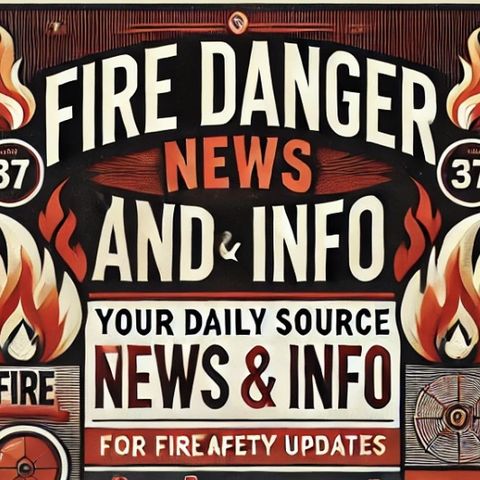USGS Leads the Charge in Wildfire Science and Management Across the American West

Download and listen anywhere
Download your favorite episodes and enjoy them, wherever you are! Sign up or log in now to access offline listening.
USGS Leads the Charge in Wildfire Science and Management Across the American West
This is an automatically generated transcript. Please note that complete accuracy is not guaranteed.
Description
Wildfires have become a recurrent and devastating threat across the western United States, with their frequency and intensity soaring in the past few decades. Scientists, policymakers, and communities are turning...
show moreThe USGS Wildland Fire Science program is a cornerstone of efforts aimed at combating wildfires. Through cutting-edge research and technology, this program enhances our capacity to predict wildfire behavior, assess the environmental impacts, and develop more effective strategies for prevention and response. With the increasing urgency posed by climate change, such scientific insights are more indispensable than ever.
One of the key areas where USGS science is making a transformative difference is in the realm of fire behavior modeling. By using advanced satellite imagery and environmental data, USGS scientists can simulate how fires will spread through different landscapes under various weather conditions. These models are instrumental for fire managers who can use them to allocate resources more effectively, protect vulnerable communities, and prioritize areas for controlled burns or other preventative measures.
Furthermore, the USGS is deeply invested in understanding the ecological aftermath of wildfires. Post-fire assessments conducted by USGS experts provide critical information on habitat changes, soil erosion, and water quality. Such evaluations are vital in guiding restoration efforts and ensuring that ecosystems recover in a way that maintains biodiversity and reduces future fire risks.
In addition to ecological assessments, the USGS also dedicates significant resources to studying the social dimensions of wildfires. This includes analyzing how wildfires impact human communities and economies and developing tools to engage and educate the public on wildfire risks and preparedness. Effective communication strategies are essential in promoting community resilience and ensuring that populations living in fire-prone areas are informed and equipped to respond to wildfire threats.
The collaborative efforts of the USGS with local, state, and federal partners are essential in the broader fight against wildfires. By fostering cross-agency partnerships, the USGS facilitates a comprehensive approach that integrates scientific research with practical fire management techniques. These collaborations are crucial for implementing innovative solutions and achieving long-term reduction in wildfire hazards.
For individuals and communities interested in learning more about the significant work being done by the USGS, the Wildland Fire Science webpage serves as an invaluable resource. This platform offers up-to-date information on the latest research findings, educational materials, and interactive tools designed to support both fire professionals and the general public in understanding the complexities of wildfires.
In summary, the intricate science of wildfires is a critical component in addressing one of the most challenging environmental and social issues facing the American West. Through the dedicated efforts of the USGS and its partners, we are progressively building the knowledge and capacity required to mitigate wildfire impacts and safeguard both natural landscapes and human communities.
Information
| Author | QP-4 |
| Organization | William Corbin |
| Website | - |
| Tags |
Copyright 2024 - Spreaker Inc. an iHeartMedia Company

Comments